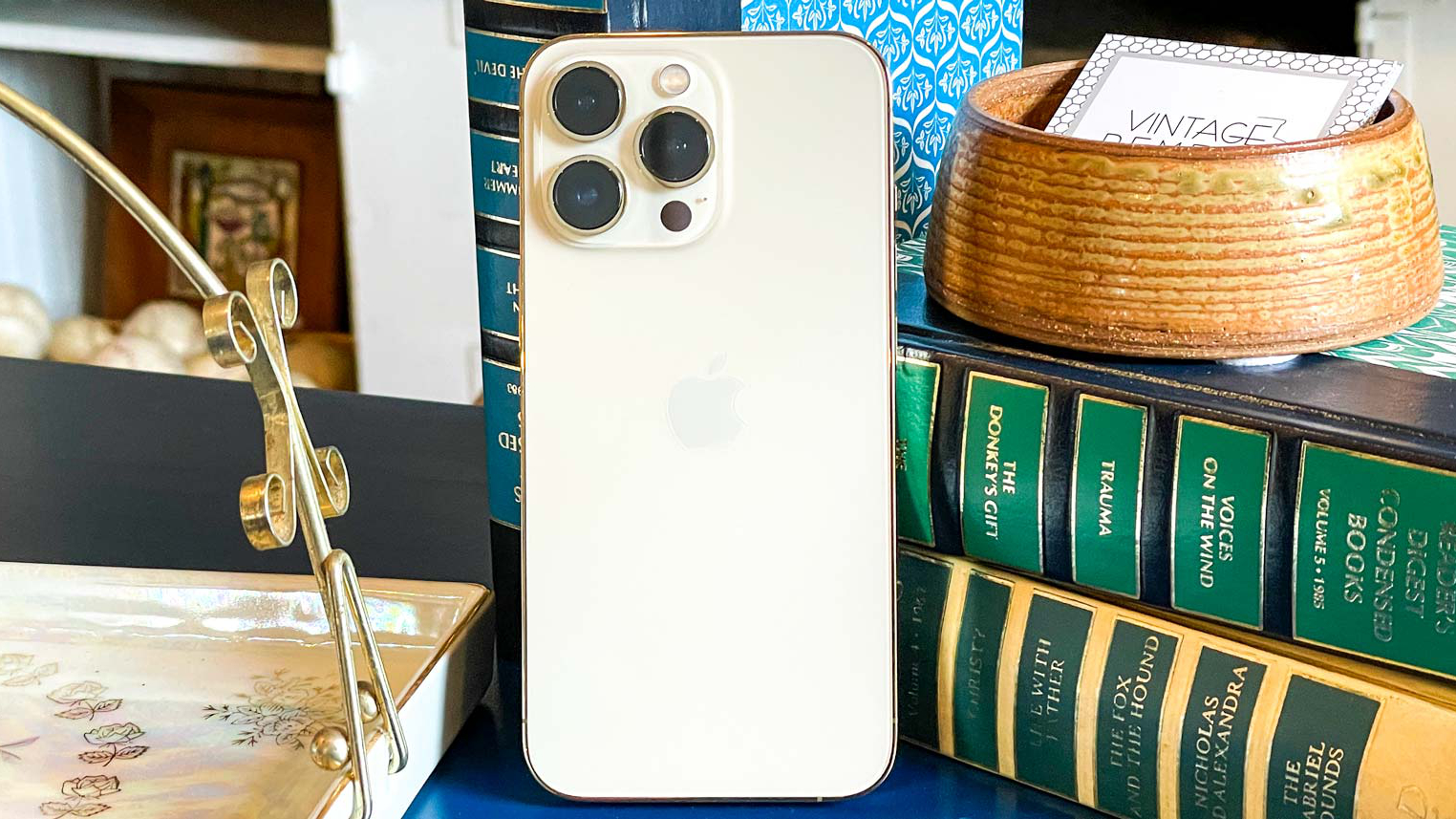iPhone 14 Pro vs iPhone 14: What's better for gaming?
Here's what the A16 Bionic chip is worth

With the iPhone 14 Apple split the chipsets between the Pro and non-Pro models. The latter uses last year's A15 Bionic, while the phone maker's new flagships use the latest A16 Bionic. Granted, the iPhone 14 has the higher-end A15 found in the iPhone 13 Pro, but it's still an older chip.
But led me to wonder, given what I know about the iPhone 13 Pro's capabilities: is the A16 Bionic worth the upgrade if you're really into gaming? The iPhone 13 Pro and iPhone 13 Pro Max were at the top of our best gaming phones list because of how strong the A15 Bionic and its 5-core GPU are. And since the iPhone 14 uses that chip, is it good enough as a gaming phone?
Based on our testing data, the A16 Bionic in the iPhone 14 Pro is definitely more powerful in our gaming benchmarks, as you would expect. But the iPhone 14 easily keeps up, still outpacing the best Android phones. There is, however, more to deciding on a gaming phone than its pure power alone. There is a decently wide feature set gap between the iPhone 14 vs. iPhone 14 Pro, so let's get into it.
iPhone 14 vs. iPhone 14 Pro: Benchmarks
To test gaming, we run a phone through 3DMark's Wild Life test. We record the average frames per second (FPS). Below, I noted the Unlimited, Extreme, and Extreme Unlimited results.
Here's how the A16 Bionic stacks up against the A15 Bionic.
| Row 0 - Cell 0 | iPhone 14 | iPhone 14 Pro |
| Wild Life Unlimited (FPS) | 69 | 74 |
| Wild Life Extreme (FPS) | 18 | 20 |
| Wild Life Extreme Unlimited (FPS) | 15 | 19 |
iPhone 14 vs. iPhone 14 Pro gaming: Analysis
The Wild Life Unlimited benchmark is a more typical gaming setting (both phones max out the regular Wild Life test), whereas the Extreme variants aren't indicative of modern mobile gaming and instead serve to illustrate what a phone's GPU is capable of. I included them here so you can see just how powerful both the iPhone 14 and iPhone 14 Pro are.

However, I want to draw attention to the first result. The iPhone 14 exceeds what many consider to be the gold standard for gaming frame rates: 60 fps. Hitting 69 fps, the iPhone 14 proves itself as a capable gaming phone. Of course, with the 60Hz display, you'll only see a max of 60 fps, even though the phone is capable of more. Yet another reason why it's a shame that Apple didn't go with at least a 90Hz refresh rate for the iPhone 14. But I digress.
Sign up to get the BEST of Tom's Guide direct to your inbox.
Get instant access to breaking news, the hottest reviews, great deals and helpful tips.
For having the newer of the two chipsets, you might expect the iPhone 14 Pro to turn in a vastly better result in Wild Life Unlimited. While 74 fps is very, very impressive — and something you would actually see with the 120Hz ProMotion display — it's a mere 5 fps higher than the iPhone 14.

Now, benchmarks don't tell the whole story, but without an iPhone 14 in hand to gather my own experiential data it's all I have to go on. From a pure GPU standpoint, I make the argument that the A16 Bionic is not worth the $200 upgrade to jump from the iPhone 14 to the iPhone 14 Pro.
However, there's more to the iPhone 14 Pro to consider than just its GPU horsepower. For one, there's the display. It's not only brighter — 1,354 nits HDR/993 nits SDR on the Pro versus 756 nits HDR/757 nits SDR on the iPhone 14 — but it has the 120Hz refresh rate, which makes a noticeable difference in games that support it.
For another, the iPhone 14 Pro has the superior battery life in our testing. In our lab, the iPhone 14 turned in a result of 9 hours, 28 minutes. The iPhone 14 Pro managed 10 hours, 13 minutes. So while not massively better (unlike last year), the Pro still does manage to last longer, which means longer gaming sessions. Now if only the phone didn't get so hot.
But there's one more thing to consider: the iPhone 13 Pro.
What about the iPhone 13 Pro?
The iPhone 14 and iPhone 13 Pro share the same CPU, the A15 Bionic with the 5-core GPU. (The iPhone 13's A15 Bionic had a quad-core GPU.) Yet the latter offers many of the same Pro features that you'll get this year, notably the ProMotion display. It also sports better battery life than both the iPhone 14 and iPhone 14 Pro, clocking in at 12 hours and 18 minutes in our test.

Its display is also quite bright at 1,024 nits. All in all, it's better in every way than the iPhone 14 other than the fact that it's a year older — and that Apple doesn't sell it anymore. However, if you want the better gaming value, the iPhone 13 Pro is the better buy, assuming you can find a good deal on one, new or used.
iPhone 14 vs. iPhone 14 Pro gaming outlook
Both the iPhone 14 and iPhone 14 Pro are excellent gaming phones, outpacing the best Android has to offer in terms of raw performance. In reality, however, most people might find the differences hard to distinguish — performance junkies might spot some of them. But on paper, is the 14 Pro that much better than its non-Pro brother?
Just looking at the raw data, not really. But nothing exists in a vacuum, and the iPhone 14 Pro has some clear advantages outside of its marginal GPU superiority. That 120Hz display makes a big difference in games that support it, netting you smoother gameplay beyond 60 fps. The battery life is also slightly better, and the brighter screen means you'll have an easier time gaming outdoors.
Of course, we shouldn't discount the iPhone 13 Pro, especially in comparison to the iPhone 14, as a gaming device. But that only matters if you either have an iPhone 13 Pro already or you find one to purchase.
I hope to get my hands on an iPhone 14 (or an iPhone 14 Plus when it comes out) to draw my own real-world conclusions, but for now, I think it's safe to assume that the A16 Bionic is not worth the Pro upgrade based on gaming performance alone. Instead, you should consider the iPhone 14 Pro's other features to help make your purchasing decision.

Jordan is the Phones Editor for Tom's Guide, covering all things phone-related. He's written about phones for over six years and plans to continue for a long while to come. He loves nothing more than relaxing in his home with a book, game, or his latest personal writing project. Jordan likes finding new things to dive into, from books and games to new mechanical keyboard switches and fun keycap sets. Outside of work, you can find him poring over open-source software and his studies.
